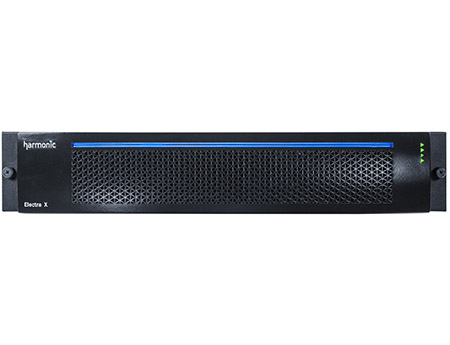Wait Continues for Next-Gen Compression

When it comes to high efficiency video coding (HEVC), the next generation of compression systems, the prognosis has been mixed. While vendors report rapid technical improvements in the application of the standard, deployments are taking longer than expected.
The advantages of moving to HEVC are notable. It’s playing a key role in delivery of 4K content by over-the-top players including Netflix, and its use could become even more compelling as a result of recent advances. But the waiting is the hardest part.
“Latency had been the biggest showstopper for live 4K content,” said Guillaume Arthuis, CEO and founder of BBright. He said BBright has reduced latency to less than 5 seconds for live content and has improved video quality by developing 12-bit HEVC encoding for file-based programming. “In parallel with that, we’ve seen reduced form factors and declines in price,” Arthuis added.
Progress is also being made in reducing bit rates while maintaining high-quality video. “When you get down to 18 Mbps to 20 Mbps for high-quality 4K sports coverage, that allows you to potentially get two signals on one satellite transponder,” said Keith Wymbs, Elemental Technologies chief marketing officer.
“We have improved compression efficiencies to reach the 50% reduction [from H.264] that the standards expect,” added Thomas Burnichon, file transcoding product marketing manager at compression equipment company ATEME. “That is for files, but we are at 30% savings for live and moving towards the 50% mark.”
CAUTION ON COMPRESSION
Despite this progress, the adoption of HEVC, first standardized in 2013, has in some ways been disappointing.
The smarter way to stay on top of broadcasting and cable industry. Sign up below
One problem has been the lack of HEVC-capable devices. “Legacy set-top boxes are a major barrier for distribution customers,” said Paul Turner, Telestream vice president of enterprise product management. By contrast, newer players such as Netflix that are not hobbled by older equipment have been faster to embrace HEVC, Turner added.
Another key issue has been the lack of new 4K services that many believed would fuel early HEVC deployments. “The general consensus has been that the adoption of Ultra HD has been abysmal so far,” said Turner.
To boost interest in Ultra HD, TV-set manufacturers have been adding high dynamic resolution (HDR) and wider color gamut to their newest sets. “The increased brightness, contrast and improved colors are much more appealing to consumers,” said Ken Morse, CTO of service provider video software and solutions at Cisco Systems.
Manufacturers have adapted several different technologies to make HDR and other improvements, which is creating some uncertainty and confusion, Morse and others said. “There are a lot of different technologies being used, and that is encouraging some folks to wait until this shakes out,” Elemental’s Wymbs added.
BRIGHTER PICTURE AHEAD
Behind the scenes, though, vendors stressed that deployments are in progress. Wymbs noted that Elemental has sold HEVC products in more than 15 countries. “We are starting to see reorders as they are getting more serious about full deployments,” he said.
“In North America, we have ongoing projects for HEVC with major cable operators that are planning to use HEVC,” said Sven Freudenfeld, head of business development for the communications business unit at Kontron, who added the company already has deployments in Europe, Asia and Africa.
Progress is also being made in the device landscape. Windows 10 will reportedly use HEVC when it hits the market in late July, and the Apple iPhone 6 and 6 Plus introduced last fall are HEVC-capable, though currently the implementation is limited to FaceTime applications. "That could seed the market for mobile services in the future," Morse at Cisco said.
Morse and others noted that HEVC will play a major role in improving video quality. Ian Trow, senior director emerging technology and strategy at Harmonic, said that HEVC offers better metadata support for HDR and is the logical way to handle the increased bandwidth requirements of HDR, wider color gamut and higher frame rates.
Better compression could also greatly improve HD programming. “Netflix is using HEVC as part of their over-the-top distribution of Ultra HD, but we expect the biggest growth for HEVC will be for HD,” particularly among IPTV operators, said Mark Senecal, manager of product management at Imagine Communications.
Trow at Harmonic added that the “high-quality HD delivery from OTT providers is really influencing operators’ enthusiasm for better HD. A lot of operators are looking at going from 720p to 1080p HD or from 1080i to 1080p HD.”
Others might even go further. “[1080p] with HDR could become the new sweet spot for a lot of people,” added Morse at Cisco.
The appeal of improved HD and the role that HEVC could play in bringing that to market was highlighted last year at IBC 2014. Here, the European Broadcast Union ran a test comparing HD with high frame rates at 120 per second to regular 4K, said Turner at Telestream. “The picture on the HD with high frame rates blew away the 4K picture,” he said. “There are a lot of improvements with higher frame rates and HDR that can still be made to HD.”
